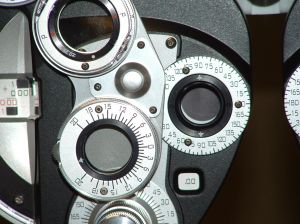New Study Highlights a Method of Treatment That Could Prevent Retinopathy of Prematurity
For infants with the condition of retinopathy of prematurity — also known as “baby blindness” — a new study provides hope that their condition will not be permanent.
 Retinopathy of prematurity occurs when the blood vessels in a baby’s eyes do not develop normally. The blood vessels become weak and may result in bleeding. Later, scar tissue develops and pulls the retina from the inner surface of the eye, resulting in vision loss. Retinopathy of prematurity commonly affects babies born before 30 weeks of gestation, due to the fact that blood vessels around the retina do not develop until late in the pregnancy. Often babies born so premature are given oxygen, and high levels of oxygen can release free radicals in the retina, causing the surrounding blood vessels to develop abnormally. The current existing treatments for this condition are surgery or using a laser to seal off bad vessels — both of which are invasive and expensive.
Retinopathy of prematurity occurs when the blood vessels in a baby’s eyes do not develop normally. The blood vessels become weak and may result in bleeding. Later, scar tissue develops and pulls the retina from the inner surface of the eye, resulting in vision loss. Retinopathy of prematurity commonly affects babies born before 30 weeks of gestation, due to the fact that blood vessels around the retina do not develop until late in the pregnancy. Often babies born so premature are given oxygen, and high levels of oxygen can release free radicals in the retina, causing the surrounding blood vessels to develop abnormally. The current existing treatments for this condition are surgery or using a laser to seal off bad vessels — both of which are invasive and expensive.
Researchers at Australia’s Vision Centre, though, have found that shining a gentle near-infrared light (NIR) at 670 nanometres is an inexpensive and less invasive solution. Unlike the current treatments, it also has no side effects.
After experimenting with the treatment, researchers found that there were fewer vessels growing in the wrong direction, as well as decreased bleeding. Researchers are not entirely sure how the NIR light helps the condition, but think that such light could send a signal to the mitochondria – the so-called “powerhouse” of every animal cell – to use oxygen more efficiently. The result is fewer free radicals and less damage.
With exposure to moderate amounts of NIR light, researchers believe that even babies who require oxygen for their underdeveloped lungs can avoid retinopathy of prematurity. The treatment would take only a few minutes per day. No mention has been made of when this treatment might be made available for use by the general public.
While many hospitals are doing a better job monitoring the levels of oxygen they give to premature newborns, too many still give too much oxygen. Hospital staff may also fail to conduct a follow-up eye exam after the mother and baby have been discharged from the hospital, which would allow them to see whether retinopathy of prematurity was developing.
Those in Maryland with babies who have retinopathy of prematurity may file a medical malpractice lawsuit against any medical staff involved with the baby’s post-birth care and follow-up visits. Families could argue that medical staff tasked with delivering and taking care of newborns should have been aware of the existing standard of care — which required hospitals to better monitor oxygen levels and/or give follow-up eye exams. The hospital acted unreasonably by not following that standard, which resulted in the newborn developing retinopathy of prematurity. Contact a Baltimore birth injury attorney to find out more.
Wais, Vogelstein, Forman, Koch & Norman has more than 100 years of collective experience dealing with medical malpractice and birth injury cases. Located in Baltimore, Maryland, the firm represents residents in Maryland and Washington, D.C. If you have a birth injury or other medical malpractice issue, contact us today for a free consultation.
